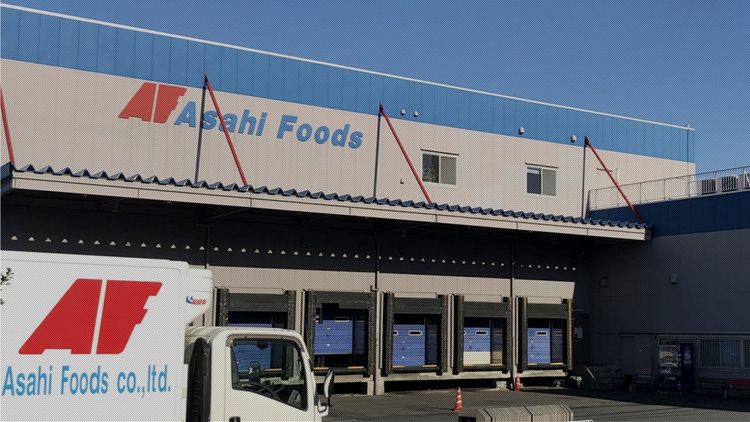Have you ever heard of the green circuit boards used in a wide range of products from home appliances to cutting-edge information and telecommunications equipment around us, such as PCs, smartphones, automobiles, and station ticket gates? They are called printed wiring boards, and CMK has been manufacturing printed wiring boards for over 50 years since its establishment in 1961, with its strength in the automotive field. It is a leading manufacturer of printed wiring boards with production bases in Japan as well as in China and Thailand.
CMK has introduced "Weathernews for business," a weather information service for businesses, in order to identify in advance the risk of lightning strikes and voltage drops to its factories. We interviewed Masashi Hamasaki - san, Manager, Niigata Facilities Section, CMK Japan, about the effects of lightning strikes on factories and how they are utilized.
In Niigata, power outages peak in winter, and even a momentary power outage can cause significant damage at manufacturing plants.
CMK has two manufacturing sites in Niigata Prefecture, the Niigata Plant and the Kambara Plant, and in recent years, countermeasures against winter lightning strikes have become a major issue.
In recent years, the company has been faced with the problem of how to prevent lightning strikes in the winter," said Yoshida san. In Niigata, where there is heavy snowfall, there is a phenomenon known as 'snow-drift lightning,' in which lightning frequently occurs as a sign that snow is about to fall. Even if the plant is not struck directly, lightning strikes power lines and instantaneous voltage drops (instantaneous voltage drops) occur several times a year, and the occurrence of an instantaneous voltage drop alone can cause defective products," Hamasaki - san said.

The total area of printed wiring boards produced by CMK Japan Inc. is 4 million square meters per year (equivalent to 85 Tokyo Domes), and approximately 88% of its total sales are used in automobiles. When a power outage occurs in a factory in the process of manufacturing PWBs, the production line stops and it takes time to re-prepare materials, or the quality does not meet standards, according to the company.
The impact of a lightning strike directly affects costs and delivery time. A single lightning strike can cost us millions of dollars. We had given up on this because it happens every year, but in recent years, with the increase in high-value-added products, the amount of damage has become much larger, and we now need to take serious countermeasures," says Hamasaki - san.

Instantaneous lightning alerts based on instantaneous low data analysis to instantly identify approaching lightning and realize risk management at low cost
The difficulty of predicting lightning strikes in advance was also a source of headaches.
Until now, each of us had looked at lightning alerts on the Internet, but most of us relied on our experience and senses, and it was difficult to take accurate lightning strike countermeasures," he says. While taking into account such risks as 'shutting down the production line would be costly' and 'once the line is shut down, it will take time to restart operations,' we needed to make the right decisions because there was no way to avoid instantaneous damage if the lightning strikes did not strike in time," Hamasaki - san said.
To solve this problem, they introduced "Weather News for Business" and now use lightning strike alerts not only in winter but also in summer. They were pleased with the accuracy and cost-effectiveness of the lightning strike data.

By analyzing a combination of CMK's data and Weathernews' data on lightning strikes, we were able to derive the probability of a lightning strike occurring at a given location and the degree of impact it would have," said Kikuchi san.
There was also the idea of making a large-scale investment in equipment such as an uninterruptible power supply (UPS), but 'Weathernews for business' was the best option for our company because it allowed us to manage risk at a low cost," said Hamasaki - san.

Significant change in employees' awareness of natural disasters and faster decision-making to take countermeasures against power outages
Currently, the system is in operation at the Niigata and Kambara plants. About 20 managers have been given smartphones with the "Weather News for Business" application downloaded, and they check the news on their smartphones or PCs.
Basically, if there is a lightning strike within 5 km of the plant, we receive a "Caution" alert, so we start preparing for instantaneous power loss. Once we receive a lightning alert, we use lightning radar and rain cloud radar to check the location of lightning strikes and the movement of thunderclouds in the future," says Hamasaki - san.
When the application was used within the company, not only was the risk of lightning strikes greatly reduced, but it also caused a change in the mindset of the employees.
First of all, we are now able to prevent damage caused by instantaneous lightning strikes. The speed of decision-making on whether or not to operate the manufacturing plant has also been greatly accelerated because there is now a single source of information.
We had the sense that instantaneous lows occurred about five or six times a year, and one or two of those times there was damage. Since it had been happening before, there might have been a feeling among our employees that 'natural disasters cannot be prevented, so it is inevitable that there will be damage caused by them. After the introduction of the system, we changed our mindset to "We cannot control the occurrence of natural disasters, but if we can reliably predict them, we can take the necessary measures," and I have the impression that awareness of risk management has taken root.

In the future, the company is also looking to use weather data for BCP measures at factories and for employee safety measures.
As a future challenge, the company hopes to create a manual so that anyone can use lightning strike data. In addition, he would like to utilize the data for strengthening BCP and employee safety measures, as well as for weather factors other than lightning strikes.
Even if lightning strikes within the warning zone, we may have to wait for a while depending on the direction of the rain clouds and the location of the lightning," he said. In the future, we would like to accumulate data and know-how so that we can respond smoothly even if the person in charge changes.
In Niigata Prefecture, including the area where our plant is located, there are many places where there is a risk of landslides due to the occurrence of linear precipitation zones. It would be great if weather data could be used as a trigger to determine when employees should leave for work and to confirm their safety, so that they can work with peace of mind.
Don't give up on the idea that lightning is a natural phenomenon, but keep your eyes on CMK Japan, which is using weather data to confront the problem of lightning strikes unique to factories.






























